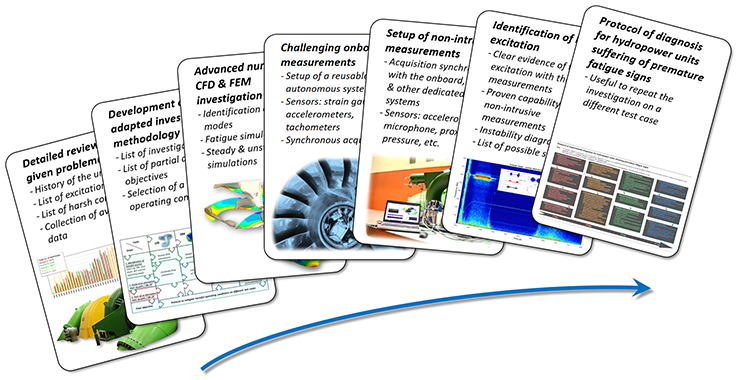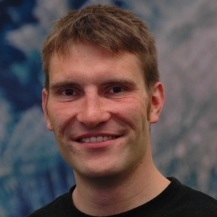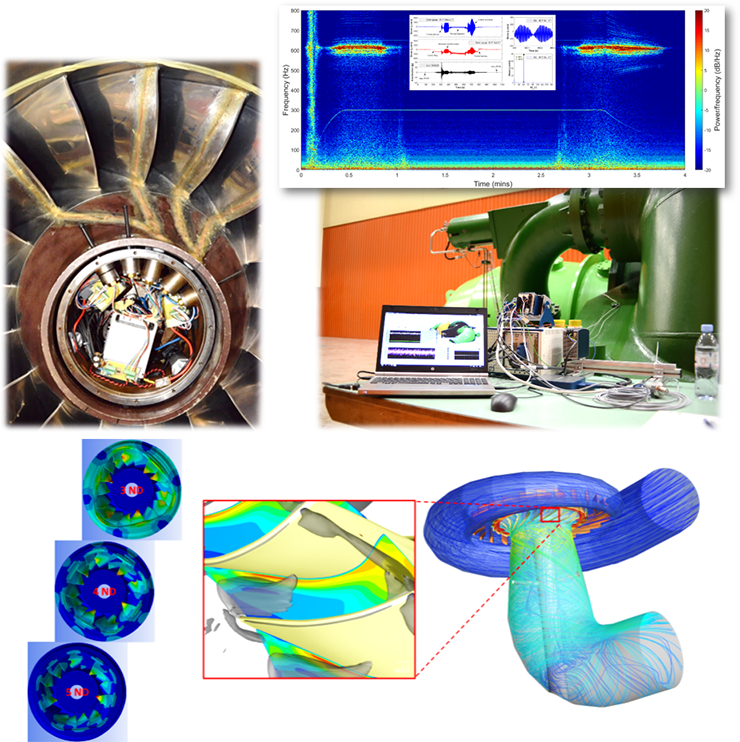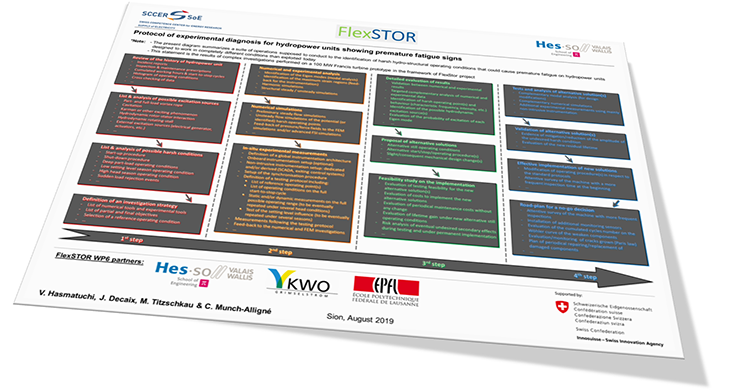Towards more flexible hydropower: preventing turbine instability during multiple start/stop procedures

August 2020 - by Dr. Vlad Hasmatuchi, Dr. Jean Decaix, Maximilian Titzschkau and Prof. Dr. Cécile Münch-Alligné
This study performed within the FlexStor-WP6 project allowed us to identify the critical operating conditions that had led to the premature fatigue of the turbine runner from Grimsel 2 power plant. We concluded that those conditions had developed due to a drastic increase in the number of daily starts and stops in recent years. In the end, we synthesized our findings in a protocol of experimental diagnosis for hydropower units showing premature fatigue signs. This smart diagnostic tool is also useful for other machines with similar problems.
The Hydroelectricity research group from the HES-SO Valais-Wallis has been in charge of the FlexSTOR-WP6 project in the SCCER-SoE (Work Package 5). The activities performed in this project, together with Kraftwerke Oberhasli (KWO) and the Laboratory for hydraulic machines at EPFL (EPFL-LMH), aimed at investigating the impact of frequent start-up and stand-by operations on hydraulic machines using cutting-edge numerical and experimental approaches.
The study focused on a 100-megawatt Francis turbine prototype, part of one of the four horizontal ternary groups of Grimsel 2 pumped-storage power plant in Switzerland. Due to a drastic increase of daily starts and stops in the recent years, cracks had developed in the runner blades of the Francis turbines, without a clear explanation for the phenomenon responsible for their onset.
The setup to understand why the cracks developed
The purpose of this study was to identify the operating conditions responsible for these cracks, on a complete start-to-stop cycle, including the full operating range from deep part-load up to full load. To this end, we conducted an in-situ experimental investigation using two synchronised sets of measurements: the first one consisted of onboard measurements while the other one consisted of external non-intrusive measurements.
For a given upper and lower reservoir level, our experiment covered the full turbine hill-chart during the measurement campaigns: start-up, speed no-load, deep part load, best efficiency point, full load and shutdown operating conditions. The onboard instrumentation, which was the more challenging one of the two, consisted of strain gauges attached to the runner blades and accelerometers and tachometers placed in the centre of the runner (in the same location as the acquisition system). The external non-intrusive instrumentation consisted mainly of accelerometers, a microphone, shaft vibration transducers and a tachometer, along with an upstream and a downstream pressure sensor, as well as an ultrasonic flowmeter.
A numerical study to complement the measurements
To complete the investigation of this challenging phenomenon puzzle and, in the end, to provide a solution, we conducted a complementary numerical study. We carried out Computational Fluid Dynamics (CFD) numerical simulations of the fluid flow through the turbine for different operating conditions and a Finite Element Method (FEM) structural and modal analysis of the runner.
We identified the critical conditions…
Based on the onboard measurements, we evidenced that the highest mechanical stresses on the runner blades occur at speed no-load operating condition during the synchronization of the machine with the network and during the shutdown. Then, we computed the eigenmodes (the natural vibration of an object) of the turbine runner by FEM modal analysis and we estimated their deformation and the mean stresses due to the flow pressure with the help of the one-way coupling between CFD and FEM.
Compiling all the experimental and numerical information, we succeeded to provide the following scenario for the onset of the harmful conditions: one of the eigenmodes of the runner is partially excited during these operating conditions. This leads to the fatigue limit overtaking and to the incipience of cracks.
…and developed a diagnostic tool to prevent them
We also demonstrated that it is possible to successfully identify the critical instability operating conditions by using only non-intrusive measurements on the stationary frame. In the end, we synthesized our findings in a protocol of experimental diagnosis for hydropower units showing premature fatigue signs. This tool is also useful for other machines with similar problems.
Authors

Dr. Vlad Hasmatuchi graduated in 2007 from the Faculty of Mechanical Engineering, Hydraulic Machinery Branch from “Politehnica” University of Timisoara, Romania. In the same year, he joined the Laboratory for Hydraulic Machines at the École Polytechnique Fédérale de Lausanne (EPFL), Switzerland, to pursue doctoral work in the field of hydraulic turbomachinery. In 2012, he obtained his Doctoral Degree in Engineering from EPFL. Since 2012, he is Senior academic associate in the Hydroelectricity research team at the HES-SO Valais//Wallis, School of Engineering, in Sion, Switzerland. He is mainly in charge of experimental investigations, as well as of numerical simulations. His research interests are the hydrodynamics of turbines, pumps and pump-turbines, including design and evaluation of hydraulic performance.

Dr. Jean Decaix graduated in 2009 in Energy and Production from the Grenoble INP university, France. In 2012, he obtained his Doctoral Degree in Fluid Mechanics, Process and Energy from the University of Grenoble, France, with doctoral work in numerical simulation of cavitating flow performed in the Laboratory of Geophysical and Industrial Fluid Flows. In 2012, he joined the hydraulic research team at the HES-SO Valais//Wallis, School of Engineering, in Sion, Switzerland. Since 2016, he is Senior academic associate in the same Hydroelectricity research team at HES-SO Valais. He focuses his main research activity on numerical simulation of hydraulic turbines.

Maximilian Titzschkau studied mechanical engineering at the University of Karlsruhe (TH), nowadays KIT, with a focus on fluid machinery and material sciences. He graduated with a diploma thesis about optimization of semi -open impellers by using CFD and stereo PIV in 2009. Since then, he works for the KWO as a research engineer in the field of turbine rehabilitation and optimization. He is focussing on the optimization of plant operation by using modern measurement methods.

Prof. Dr. Cécile Münch-Alligné obtained an Engineering Degree from the Grenoble INP University, France, department of Numerical and Modelling of Fluids and Solids, in 2002. She then obtained a grant at the CNRS and the CNES to start a PhD thesis on large eddy simulations of compressible turbulent flows. She defended her Doctoral Degree in 2005 at the INPG. From 2006 to 2010, she worked as a research associate in the Laboratory for Hydraulic Machines at EPFL on flow numerical simulations in hydraulic turbines. Since 2010, she has been Professor at HES-SO Valais//Wallis, in Sion, Switzerland, where she is head of the Hydroelectricity research team. Her main research interests are hydraulic turbomachinery, numerical simulations, performance measurements, turbulence and fluid-structure interactions.


